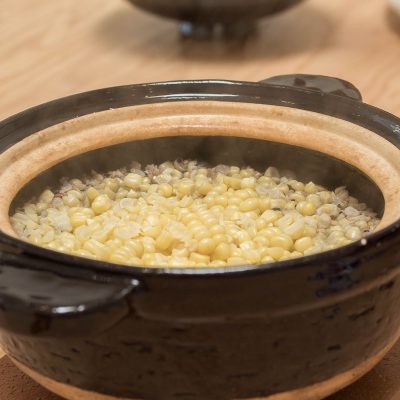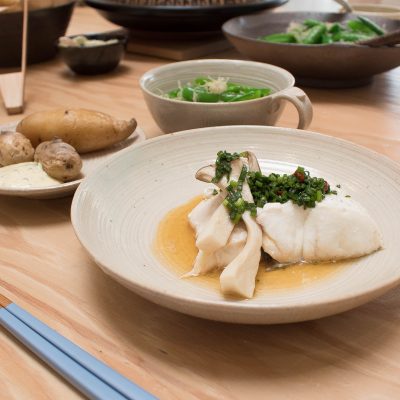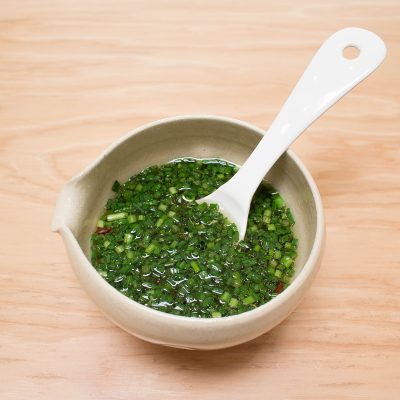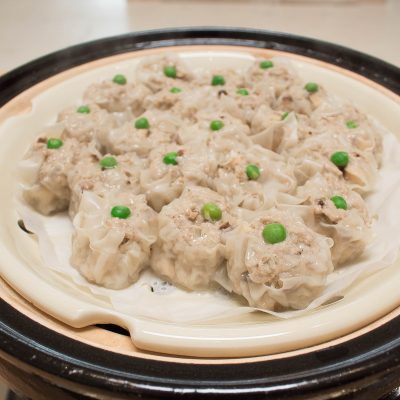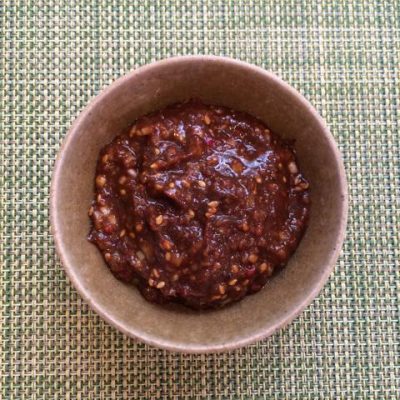This colorful treat is an easy one-pot dish with a lot of flavors. I like to use halibut for the rich tender texture for this dish, but you can also make it with other kinds of fish such as black cod, sea bass, salmon, etc. The fish is topped on the top parts of green onions and sprinkled with garlic slices to steam for beautiful aromas. The fish is also dusted with some katakuriko (potato starch) so this way the fish can absorb more flavors and retains moisture better, but you can cook without katakuriko, too. The sizzling sound and aroma of the smoking sesame oil when it’s poured over the fish stimulate your appetite so much. With the umami-rich sauce and aromatic toppings, this dish can become a healthy and satisfying main course.
I got the super fresh Alaskan halibut from Kai Gourmet again! They have the sustainably sourced premium sashimi quality seafood and deliver to your door, anywhere in the US. I can order by midnight and get my order overnight. I have been a huge fan of Kai Gourmet for many years.
I partnered with Kai Gourmet again and have a promo code for you. Visit their website and enter the below code to receive 10% discount for your order (full priced items only). Hope you will try their seafood!
Website: https://kaigourmet.com/
Promo Code: ToiroKai10




















